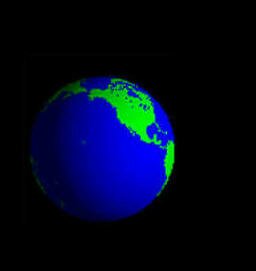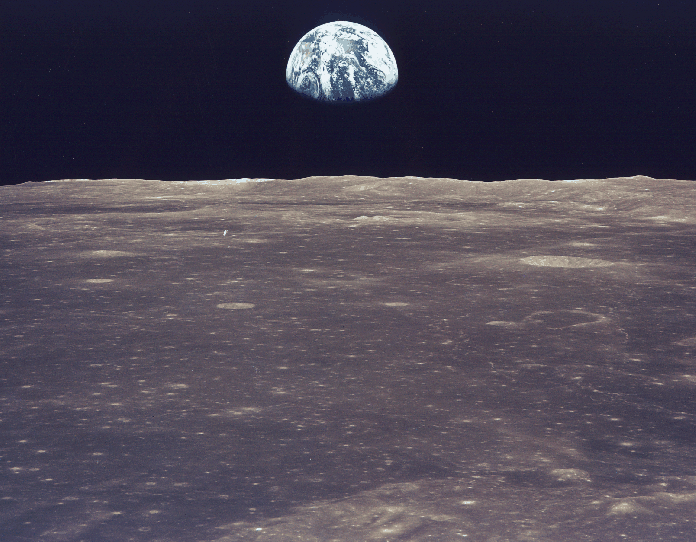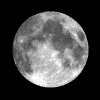
MOON FACTS
Click here to see what the Earth looks like from the moon.
The moon is our only satellite.
The moon revolves around the Earth.
The moon revolves counterclockwise around the Earth
Like the Earth, the moon rotates on its axis.
The moon revolves around the Earth in about 28 days.
The moon rotates once on its axis in about 28 days. (That is why the same side of the moon is always facing us.
The moon is 238,857 miles from the Earth. Its diameter is 2,160 miles.
Every month, the moon makes one complete trip around the Earth.
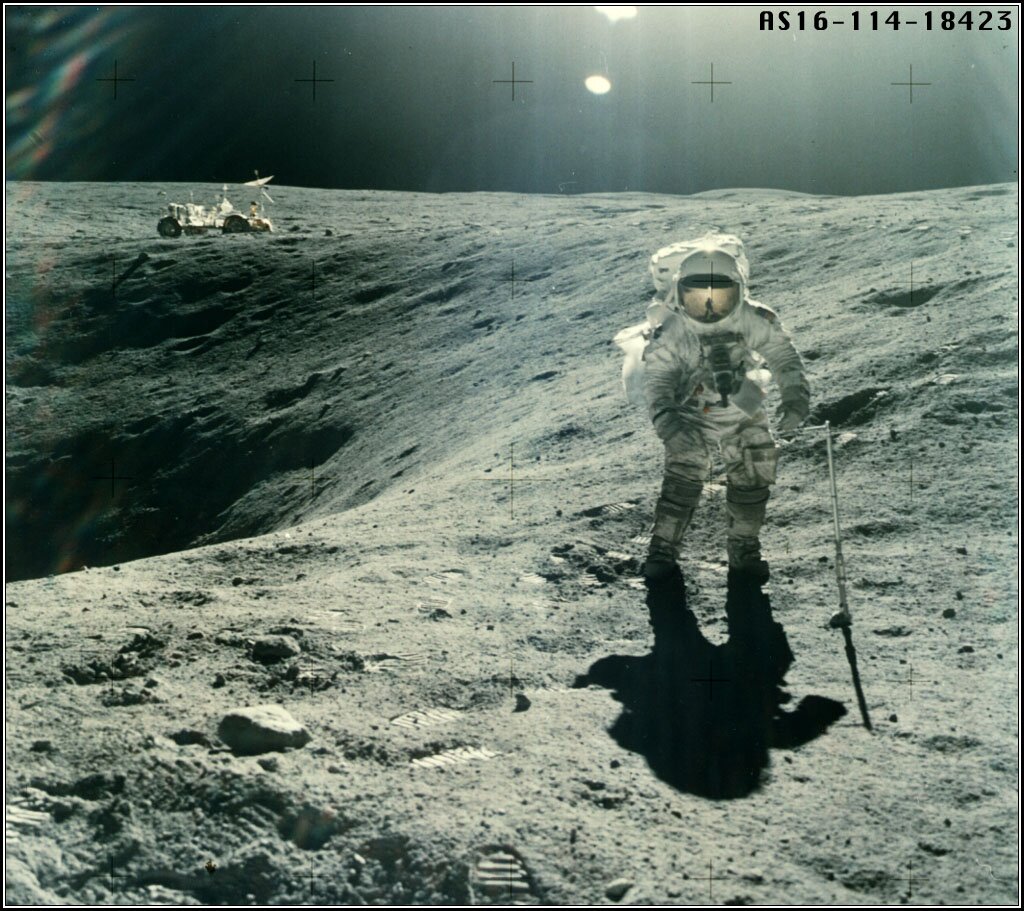
The Moon is made from many of the same things that we find here on Earth. Scientists studied about 800 pounds of moon rocks brought back by the Apollo astronauts. Their tests showed that the rocks from the Moon are similar to three kinds of igneous rocks that are found here on Earth.
12 men from the Earth have walked on the moon. Click here to learn more.
The Moon does not have any air. That is why astronauts had to take tanks of air with them.
|
On July 20, 1969, Neil Armstrong became the first man to step onto the surface of the Moon. He was followed by Ed Aldrin, both of the Apollo 11 mission. They and other moon walkers experienced the effects of no atmosphere. Radio communications were used because sound waves can only be heard by traveling through the air. The moon's sky is always black because there is no atmosphere. The astronauts also experienced gravitational differences. The moon's gravity is one-sixth that of the Earth's; a man who weighs 180 lb. on Earth weighs only 30 lb. on the Moon. |
If you should decide to land on the moon, you may want to know these facts:
1. The moon is dry and barren.
2. The moon has no atmosphere. Why would that fact be important?
3. The moon has no water. (No soda either!)
4. The moon is made up of mainly rock. Its surface is dusty and filled with craters.
Let's go back to fact #2.
Of course, you would have no air to breathe. But watch out! The moon has been hit by many huge meteors, like giant rocks slamming against the surface. That is what causes all the craters.Meteors also come flying at the Earth. If they do hit the Earth they are called meteorites. But they mostly burn up because of friction. Friction is caused by the rapid rubbing of two surfaces against each other. Rub your hand together quickly. Do you feel the heat?
So...what do you think creates the friction that causes the meteors to burn up before they hit the Earth? And why don't they burn up before they hit the moon?
Watch the moon as it goes through its phases. You are looking at only one side of the moon. Whether you see darkness, or a brightly lit circle, or a crescent, or only half of a circle depends on where the moon is in its trip around the Earth.
Study the diagram below. The small moons show what is actually happening to the moon throughout the month. The larger moons show what the moon looks like from the Earth in those positions during the month.
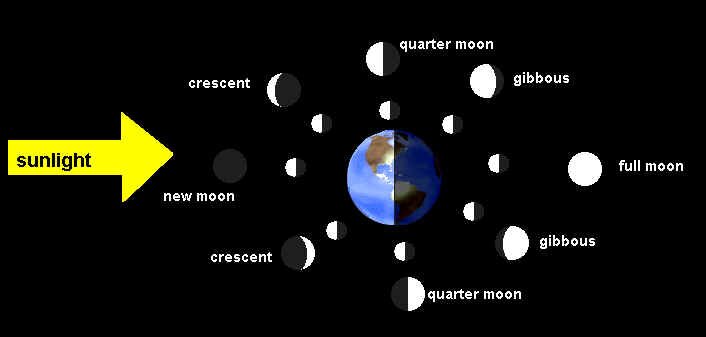
Follow the phases of the moon on these dates this year, 2002.
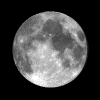 |
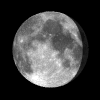 |
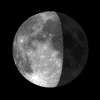 |
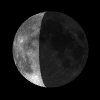 |
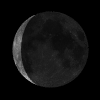 |
| January 1 | January 2 | January 4 | January 6 | January 8 |
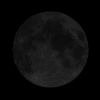 |
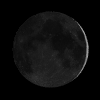 |
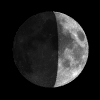 |
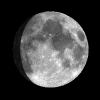 |
|
| January 12 | January 16 | January 20 | January 24 |
January 28 |
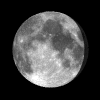 |
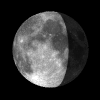 |
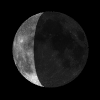 |
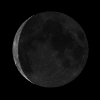 |
|
| January 31 | February 2 | February 5 | February 7 |
Can you match these pictures with the diagram above them?
1. Which date in January shows a very gibbous moon?
2. Which date in January show a small crescent moon?
3. Which date in January shows the new moon?
4. Which date in January shows a full moon?
5. Approximately how long does it take for the moon to complete all of its phases, from full moon and back again to full moon?
6. Which date shows a quarter moon?
Activity:
Go here to see what the moon will look like tonight.
Copy the picture below into Paint. Then copy, paste, and label the following phases of the moon:
new - full - waxing and waning crescent - first and last quarter - waxing and waning gibbous
